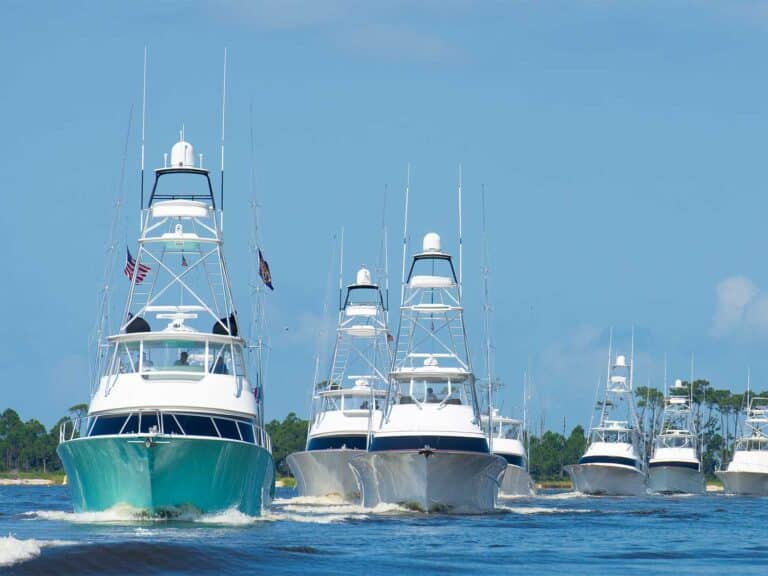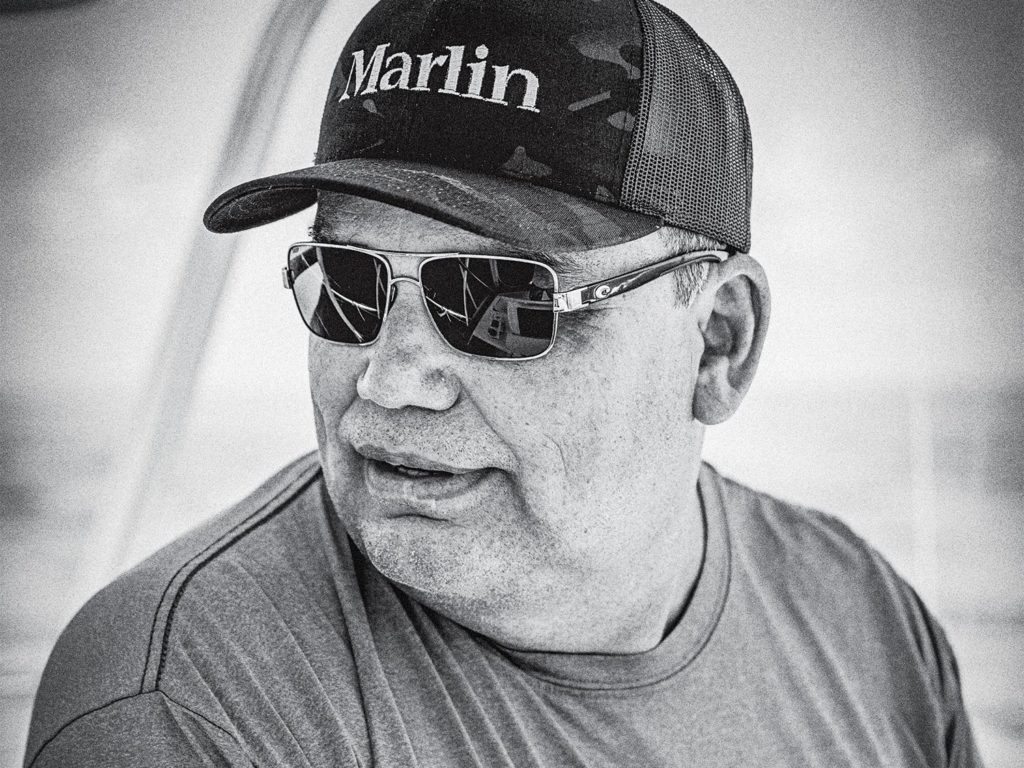
For most of Capt. Daniel Espinoza’s career, a life on the water was all he ever wanted. From a 10-year-old boy catching dock snappers with a hand line after school to running one of Costa Rica’s best-known charter boats to now heading up a busy operation building custom sport-fishers, his journey has been an interesting one.
Like most of the offshore-addicted among us, it was a family member who first inspired a young Espinoza to take up fishing. “My uncle was a commercial fisherman in Quepos, and my father used to take me down to the docks to fish all the time,” he says. “I really loved it. Every day after school, I’d be down there with a little spool of line in my pocket, fishing around the old pier or off the beach. There were a few pangas on the moorings—this is way back before the marina was built—and I used to say to myself, I’d like to do that one day.”
Watch: We show you how to rig one of the best baits for blue marlin: the swimming mackerel.
As with any calling, persistence pays, and soon, a young Espinoza was running outboards and washing boats for a company called Sport Fishing Costa Rica, which operated a fleet of 26-foot Strikes in Quepos. Eventually, the company let him run the boats from the dock back out to the moorings in the harbor, always under a watchful eye—too fast or too careless and you were fired on the spot.
As his boathandling skills grew, he found himself as a Strike mate for three years, then at the helm of a 28-foot Bertram, his first captain’s job. “I was only 17 years old, but I was big for my age,” he says. “I didn’t tell anyone how old I was, it just happened, and I ran that boat for three years. Back then, we fished with just a radio, a compass and a fish finder. That was it.”
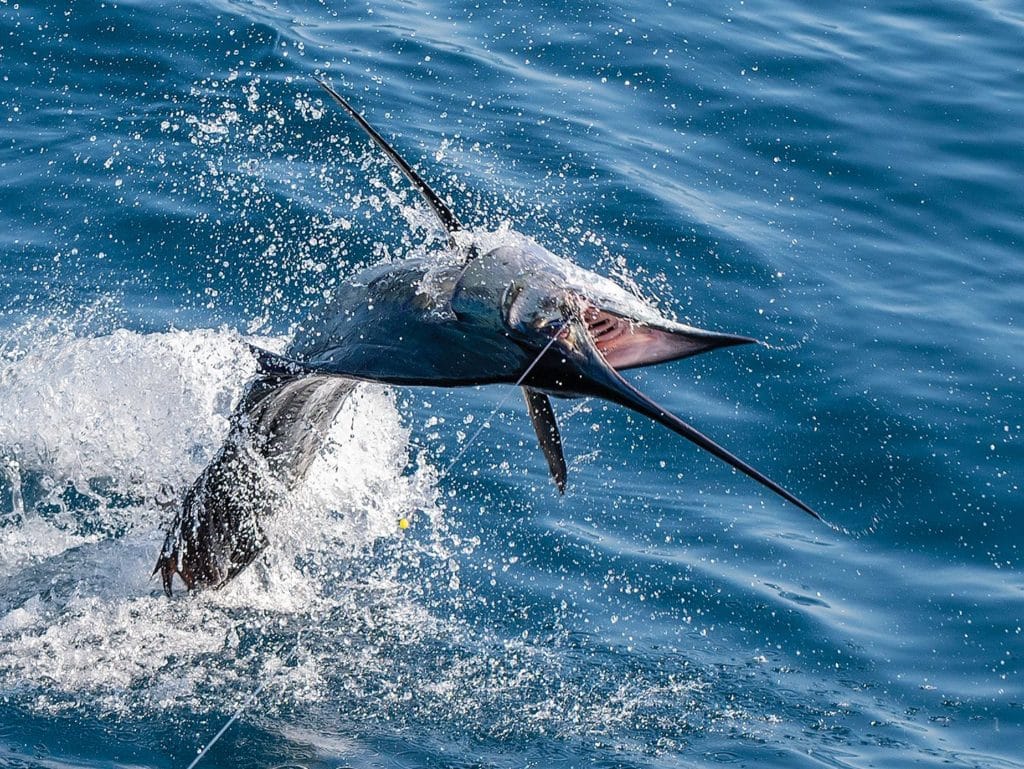
A Fortuitous Start
Next came one of those introductions that can drastically alter the trajectory of a person’s entire life. Espinoza met an American fisherman living in Quepos named Richard “Bim” Lebo, who wanted him to run his personal boat, a 22-foot outboard. Espinoza was thrilled at the opportunity to captain a private boat, but soon, people were asking to charter. Lebo’s wife, Nancy, became the booking agent, and they found themselves looking to upgrade to a bigger boat as the calls kept coming in and the business grew. Next came a 32-foot Blackfin called Bobcat, which they completely overhauled and fished hard for several seasons. The charters kept coming, and the need for an even larger boat was apparent. “We heard there was a guy who used to work for Gamefisherman who was building boats in a warehouse next to the airport in San Jose,” Espinoza says. Lebo jumped at the chance and hired Steve French to design the hull. With Lebo’s love of fly-fishing, he named the boat Spanish Fly and soon moved the charter operation from Quepos to an up-and-coming marina resort called Los Sueños, about 45 minutes up the road. The year was 2003.
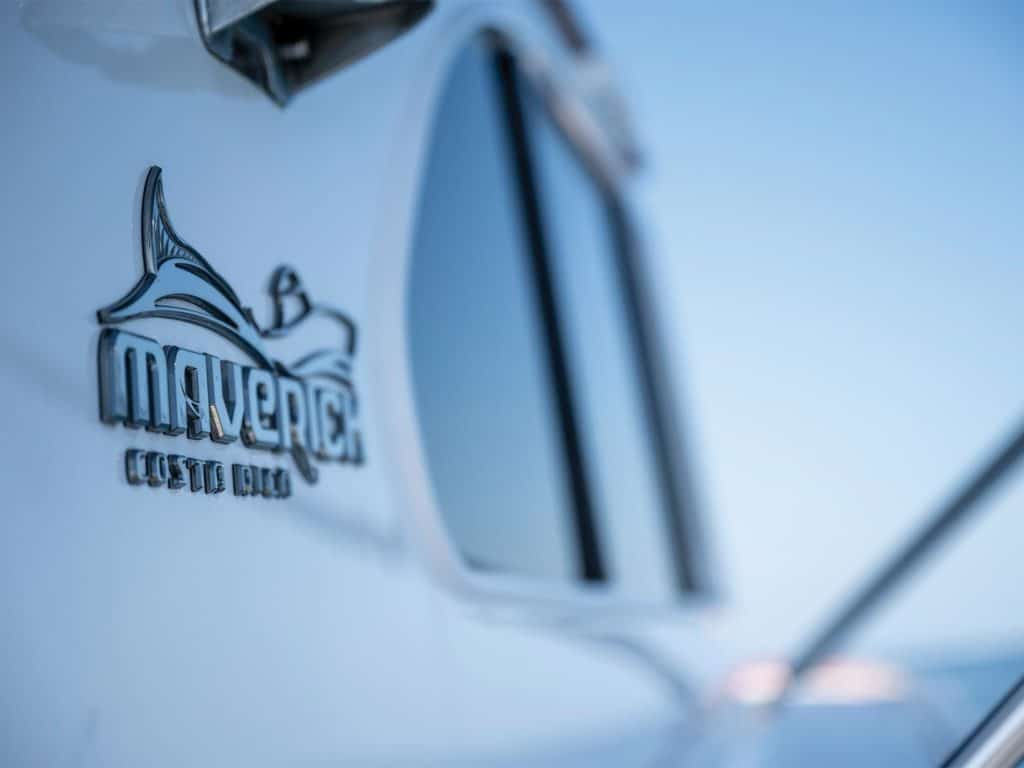
The Charter Life
For the next decade, the Lebos and Espinoza built an impeccable reputation as one of the top charter operations in Costa Rica, consistently placing in the money in the new Los Sueños tournament series, and even winning the overall series title in 2006. Spanish Fly was a weapon: large cockpit, highly maneuverable, and an incredible fish-raiser, plus it was durable, reliable, and easy to maintain. Fishing hard up and down the length of Central America, boat and captain were winning and placing in tournaments in Panama, El Salvador and Guatemala, and amassing an enviable reputation as one of the fishiest duos in the sport. Espinoza’s best day of charter fishing tallied 47 sailfish; the offshore seamount fishery produced 24 blue marlin in a single day. With numbers like that, the boat surpassed 10,000 billfish releases and yet has remained in remarkably pristine condition, thanks to its rugged construction, among other attributes.
Designed as a charter boat from the hull up, Spanish Fly was designed for comfort and fishability rather than flat-out speed; the current pair of 500-horsepower Cummins engines push her along at a 25-knot cruise but are economical enough to operate for the long game. The boat is also designed with removable interior furnishings, aft bulkhead and deck. In typical charter-captain fashion, Espinoza became an expert at handling nearly any repairs needed, including the time he performed a complete engine swap in just 48 hours. “We had a cracked water jacket on one of our original Caterpillar engines, so I used some JB Weld for a temporary fix so we could keep fishing,” he says. “Bim bought a new engine from a CAT dealer in the States on a Friday, and our exporter had it to us in Los Sueños on Monday. By noon on Tuesday, we had the old engine out, but the newer B-series CATs were 2 inches longer and it didn’t fit. It took an extra day, but we were fishing again on Thursday and lost only two days.” There was another time on Spanish Fly where Espinoza mangled a rudder when he inadvertently hit a manta ray—fabricating a new one would be at least two weeks. “I lowered the rudder post a little and just cut it off,” he says. “The boat ran fine with one rudder, and we kept fishing the entire time. We always had the attitude of doing whatever we could so we didn’t miss any days and disappoint our clients.”
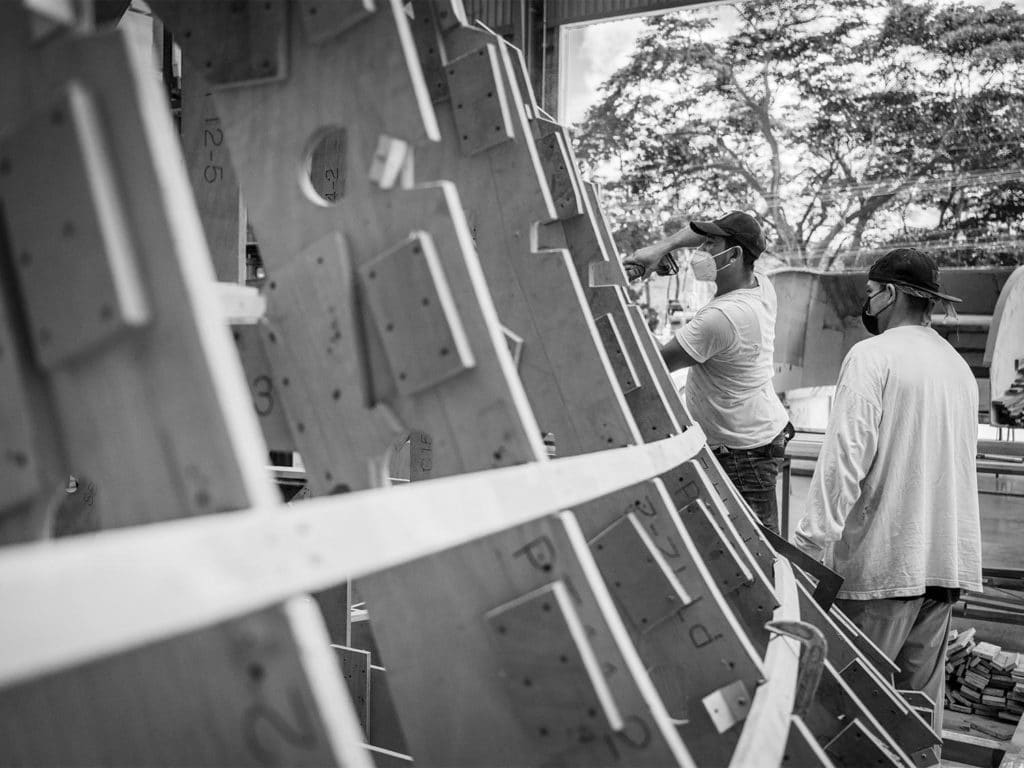
Tuna Troubles
As if the life of a hard-fishing charter captain isn’t busy enough, there are always enough curveballs to keep things interesting. As he was transitioning from the boat to the shop, Espinoza turned over the helm of Spanish Fly to his backup captain, Juan Carlos Fallas. The date was March 12, 2014—in the cockpit were mates Carlos Espinoza and Robert Salinas, along with longtime charter clients Bob and Karen Weaver. That day, Karen hooked what has been called a unicorn of the sea: a nearly all-white blue marlin. While not a true albino but rather a condition known as leucistic, with partial coloration in the eyes and parts of the fins, the fish was still among the first of its kind ever seen before. Karen has since passed away, but the memories of the encounter with the snow-white blue marlin continue to live on with her husband, Bob, and as part of the Spanish Fly legacy.
Another day in 2008 remained memorable for Espinoza, but for an entirely different reason. “We were charter fishing and had found the tuna,” he says. “There were about seven other boats with us, and a couple of us were hooked up with some really nice yellowfins when one of those big commercial purse seiners came charging in and started to set their net around us. We weren’t moving—we were actively fighting fish—but they got really aggressive. They were going to seine us all in! The nets cut off our fish. They wanted to make an example to intimidate us, but we shot some video of this whole incident. A few days later, Super Fly was by themselves on some tuna, and the same thing happened. They were hooked up and had a seiner cut off their fish and threaten to surround them in the net, so we ran to them to help get them out. Those videos we shot ended up on the national news, and eventually we were able to use them to help get the foreign-flagged tuna seiners pushed out to 60 miles off the coast. And now the tuna are back—the fishing here is better than ever.”
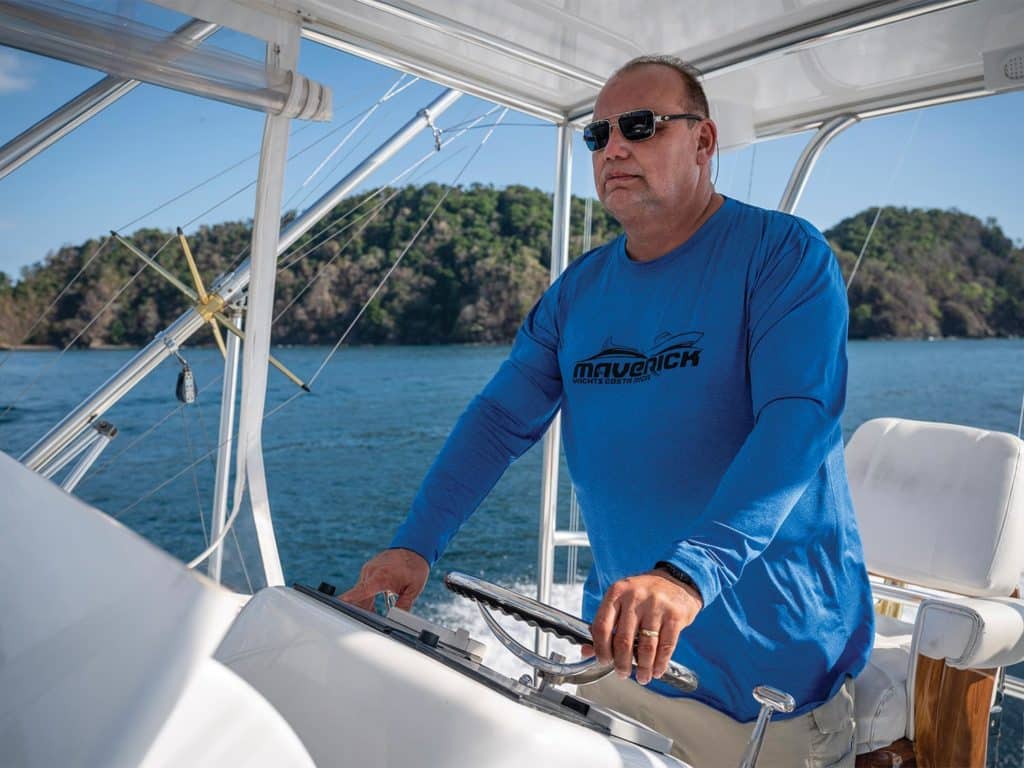
Building Mavericks
Based on the success of Spanish Fly, Lebo decided to continue building charter boats. Word of the brand began to spread in the fishing community; that’s when a lawyer from California named Larry Drivon heard about the operation and came to Costa Rica to check things out in 2006. He was interested in purchasing a 35-foot Cabo at the time, so Lebo made him a deal: Charter and fish on the Cabo in Los Sueños for three days and fish with Espinoza for three days on Spanish Fly—if he didn’t buy a Maverick after that, those days would be on the house. Drivon fished one day on the Cabo, two on the Maverick, then signed a contract on a new boat that afternoon. He and Lebo developed a friendship as they fished together over the years, where Drivon eventually became a partner in the boatbuilding side of the business. The two formed an agreement where, should either of them become ill or pass away, the other would assume ownership of the company. Diagnosed with esophageal cancer and forced to return to the US for treatment including surgery, Lebo left the business to Drivon; now 84, Lebo has since made a full recovery and resides in Florida.
Drivon needed someone to assume the day-to-day job of running a now-busy boatbuilding operation. He turned to Espinoza, who looked forward to the challenge. “I loved the fishing, but sometimes in your life, you have to look to the future and decide what’s best for you and your family,” he says. After more than a decade at the helm of Spanish Fly, it was time to turn the page. Now he would be Daniel Espinoza, boatbuilder and chief operating officer at Maverick Yachts Costa Rica.
Relocating from San Jose to a new facility in Herradura, just a short distance from the docks at Los Sueños, Maverick has recently undergone a complete reorganization. Now with naval architect Erwin Gerards designing the boats, they currently produce 36-, 40-, 45-, 50- and 60-foot models; they’ve also built two 50-foot Hinckley-style cruisers. To date, they have 23 boats in the water from the US to Central America, with four more in current production. Their latest project is a 40-foot performance sport-fisher powered by quad outboards and sporting a narrower beam—fishy and fast. The company is also branching out into an on-site marine-supply business, as well as another that will specialize in safety equipment, including life-raft recertification. American businessmen Wayne Lewis and Michael Bodnar have joined the company as CEO and CFO, respectively, and are poised to ensure that it continues a trajectory of positive growth. Like many others, Lewis first came in as a charter client, but after numerous visits to the factory, he became so enamored with the business and the people who make it all happen that he was determined to find a way to become more involved.
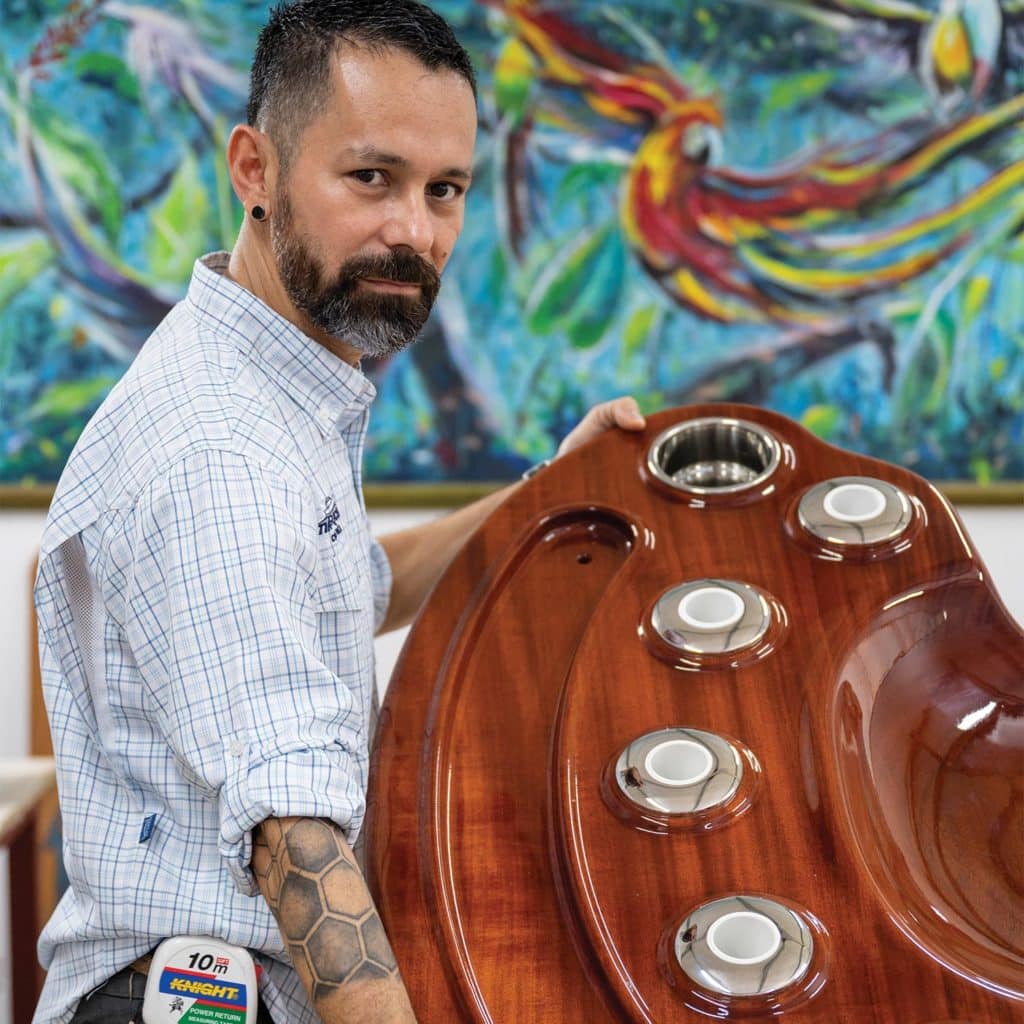
The charter operation spun itself off into a separate business as well. A Louisiana entrepreneur and passionate angler named Will Drost came to Costa Rica and fished with Espinoza on Spanish Fly. Drost had previously fished with some of the finest charter fleets in the world, including those at Tropic Star Lodge in Panama and Guatemala’s Casa Vieja Lodge, and saw the potential that existed in Los Sueños. “I loved the fishing, the boats and the people in Costa Rica,” he says, “and it was an incredible opportunity to do business in a beautiful real estate and marina development.”
Soon, the single-boat operation became two, then three. Now, they manage a 10-boat fleet of custom Maverick Yachts ranging in size from 36 to 50 feet in length as a charter business known worldwide simply as the Fly Boats. “It’s a unique situation where someone can purchase a Maverick Yacht and, if they choose to, they can put it into charter service,” Drost says. “We supply a professional captain and crew, make sure the boat is maintained to the highest standards, take care of all maintenance, plus booking, insurance, dockage and all the other little headaches. And each month the owner receives a detailed profit-and-loss report. It’s a way to help offset the cost of owning a custom sport-fisher in a foreign country.”
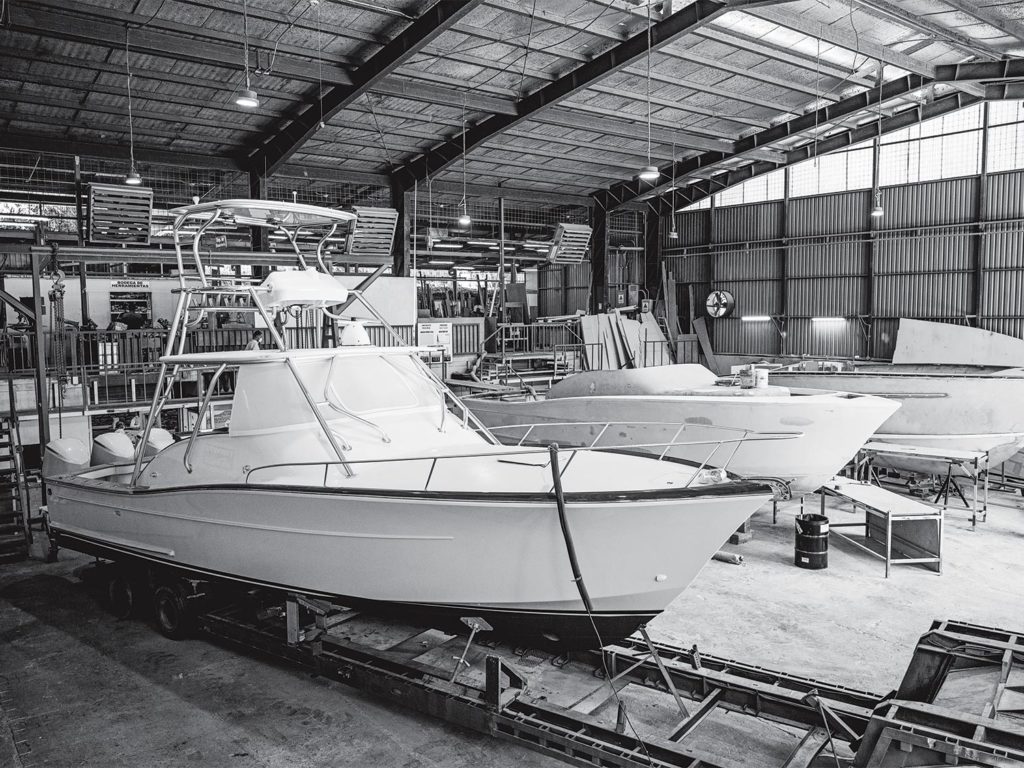
Spanish Fly remains the queen of the Fly Boat charter fleet. Now with more than 50,000 hours, the boat is currently on its fourth set of engines, second set of teak covering boards and second teak deck. It has undergone several major refits, including the addition of mezzanine seating, a Seakeeper gyro, new Garmin electronics, and much more. As with the others in the fleet, Spanish Fly is charter fishing somewhere north of 200 days each year, just as it has done since 2003.
Espinoza, married 30 years this December, is a proud father of three—two daughters and a son—with one grandson and another on the way. He looks forward to future days where he can spend more time with his growing family; he has already purchased a beautiful piece of property in a small community up in the mountains outside Herradura, amid cool flowing streams, and surrounded by a rainforest full of toucans and howler monkeys. But his heart will always remain with the sea, and with Spanish Fly.






